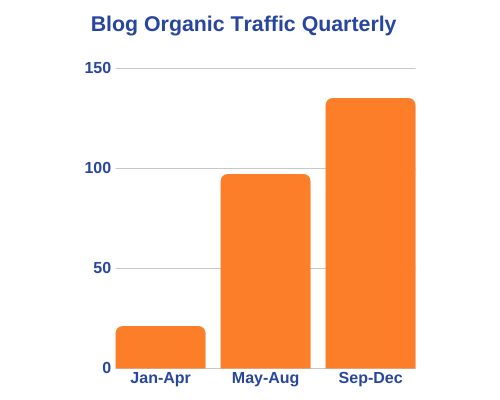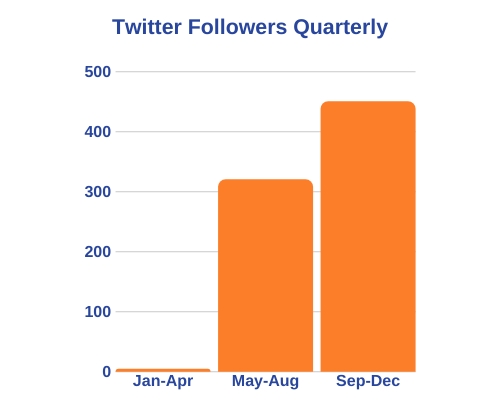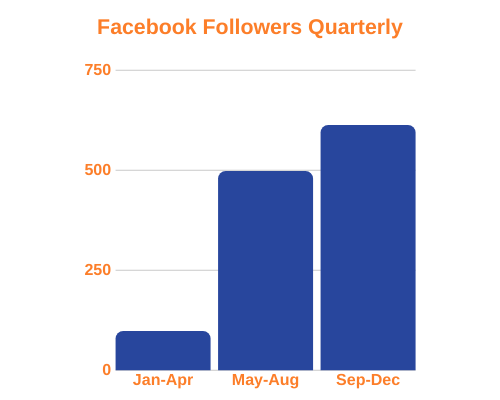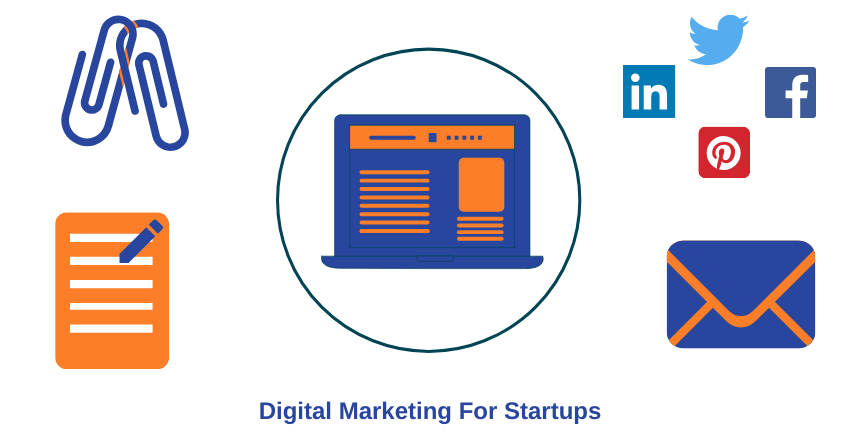This article is more about how I have used Digital Marketing to build brand Proxzar, which is an early stage startup.
I’ve seen several startups who seem to shy away from building a brand – possibly because they are too busy creating and validating the product to build a pipeline of paying customers!
I feel it is much easier to influence an audience early on with a brand that could eventually make marketing activities look like a breeze and that too with a budget that an early stage startup can afford!
My intent in writing this article is to share the easily implementable and affordable Digital Marketing processes and tools that I’ve used to build the brand Proxzar as it stands today. And, I feel that similar processes and tools could be adapted by other early or seed stage startups – most of whom, as I see, get challenged with creating awareness about their respective products/services to a wider audience across the world.
How we have done it?
As a Digital Marketing Lead (myself), our DM team was challenged by my Founders to build a brand for Proxzar. After several rounds of brainstorming sessions and iterations, we’ve stabilized the process, which starts with a well-designed three pronged branding strategy along with an implementation plan.
Three pronged branding strategy:
- Create visuals
- Create and Promote fresh content
- Create and Publish social media content
1. Create Visuals:
We first started with the visuals: logo and colors to identify brand as unique amidst our competitors. The logo itself was created to reflect the very meaning of Proxzar (Proxy of a Czar or Proxy of an Authority). We took the help of a professional graphics artist to create this logo.
The blue colored section in the icon is the modern image of a Czar (means an authority; we borrowed this word from Russian lexicon) and the orange colored section is a mirror (proxy). And, there is space between the mirror and the authority, which reflects how one stands in-front of the mirror. What is being mirrored is the head of the Czar (orange color), which means the knowledge of the authority is mirrored. This mirror (proxy) facilitates an understanding of expert’s knowledge to end users (one-to-one) through a natural language interface as in a conversational bot or chatbot or a virtual assistant.
Next the website. Initially, the website was built as a single page bootstrap using Joomla and later (in March 2019) it was re-designed and built as a multi-page website using WordPress for ease of maintenance and thanks to the availability of hundreds of WordPress plugins.
2. Create And Promote Fresh Content:
Every week, we have to create and publish at least one blog article related to the uses and applications of Artificial Intelligence, Natural Language Processing (NLP) and Natural Lanugage Interface (NLI) across industries and assorted usecases.
3. Create And Publish Social Media Content:
To implement the second and third steps in our branding strategy, we’ve to create fresh content – both on our website and social media. The question is: How to build the content that is:
- relevant to our target audience, and
- stays true to our business purpose that could be subtly built into the brand?
With a clear strategy defined in consultation with the Founders and team, we have identified goals that should be realized as part of implementing the strategy.
After much deliberations, we’ve identified below 7 specific areas with well-defined goals and metrics to bring focus and work as a team. These goals are further broken down into actionable activities that are planned monthly and monitored weekly.
1. Content generation for website
This area activities map to Goal #2: Increasing visitors to the website (Organic).
List of activities to reach the Goal #2 are:
a) Generating blog content (to generate organic traffic): To increase the visitors to website, fresh relevant content needs to be created and published in our blog. For content generation, we used the tool Ubersuggest for collecting keywords and LinkedIn for gauging buyer persona of our target audience. Using this information, we generated more than 85 unique titles for our blog articles.  These articles are used to do secondary research by our content writer. We have a blog calendar that is integral to our monthly plan and also, to manage the work done by content writers and social media interns. Apart from the listed titles, I’ve also done research on the buzz in Social media and written a few articles for our blog, which includes graphics created using Canva.
These articles are used to do secondary research by our content writer. We have a blog calendar that is integral to our monthly plan and also, to manage the work done by content writers and social media interns. Apart from the listed titles, I’ve also done research on the buzz in Social media and written a few articles for our blog, which includes graphics created using Canva.
b) Building Presentations: These are wrappers to the important blog articles in a presentation format. These presentations are published on SlideShare by our Social media intern and we’ve generated good traffic from this content.
c) Creating Info-graphics: To increase visitors to the website, another important format to attract visitors is to create Info-graphics on an important topic that is being discussed in reputed AI related forums and social media. After thoroughly researching the topic, I generate content for creating an Info-graphic. We’ve experienced Graphic designers who create info-graphics.
By continuously monitoring the above activities using Google Analytics, I get to know the probability of realizing the goal ahead and not at end of the month! When I see lower probability, I make tactical adjustments to the strategy by identifying additional activities that have to be taken for realizing the goal.
2. Content generation for social media
This area activities map to Goal #3: Increasing followers on Social Media.
List of activities to reach the Goal #3 are:
a) Researching and creating content: We started social media marketing with zero followers! We prepared 5 days content type plan for publishing to social media. The content types are:
- Monday: AI related quote
- Tuesday: Technology tip
- Wednesday: Industry update
- Thursday: Info-graphic, and
- Friday: Image from our blog
As part of this activity, I do research and create the content for publishing to social media.
3. Social Media Marketing of fresh content being generated
 This area activities map to Goal #2: Increasing visitors to the website (Social) and Goal #3: Increasing followers on Social Media.
This area activities map to Goal #2: Increasing visitors to the website (Social) and Goal #3: Increasing followers on Social Media.
List of activities to reach the Goals #2 and #3 are:
a) Promoting content in social media channels: After creating content for social media channels, next step is to promote it on Facebook, Twitter, LinkedIn, and Pinterest. After consistent and periodic reviews, we found that the content types: quote, technology tip, and industry update are not attracting new followers or engaging existing ones. We changed the social media roster to replace these types and generate new content for new types: video, info-graphics, and images from our site.
b) Joining Facebook groups and sharing blog articles in the groups
c) Tagging Facebook followers who are interested in AI related discussions or articles
d) Using Twitter mentions of followers who tweet on AI
e) Retweeting interesting tweets of our followers
f) Repinning on our Pinterest board of the pins of our followers
g) Sharing our blog articles in LinkedIn and select AI groups
We optimized our website according to SEO. I have done both on-page optimization and off-page optimization.
On-page optimization: This area activities map to Goal #2: Increasing visitors to the website (Organic).
We optimized our website for on-page factors like meta tags, H1 tag, alt tags and canonical tags on every page of the website. After optimizing, we submitted the website along with sitemap to Google search console for indexing. We enabled Google Analytics on our site for analyzing day to day status of visitors to our website. We created custom dashboards in GA for a targeted analysis. Yoast Plugin was of great help in On-page SEO optimization.
Off-page Optimization: This area activities map to Goal #2: Increasing visitors to the website (Referral). The most followed off-page optimization for our website is generating backlinks. I have prepared the document on sites list with metrics of high page authority, domain authority, Alexa rank and monthly organic visitors. Depending upon these metrics, I engage in an email conversation for generating follow links. For no-follow links, I submit the content to appropriate sites with high page and domain authority. Also, I have created an account in quora for answering AI related questions posed by forum users.
5. Email Marketing with GDPR compliance
This area activities map to the Goal #2: Increasing visitors to the website (Referral – Email). We started Email marketing with a well-honed process. This process was firmed up after several iterations and experiments with our Inside Sales Associate. First, we generate a preliminary list of prospects from a tool called Findthatlead. Next, we validate the correctness of list entries by using another tool called Zerobounce. Finally, we verify the list by checking the job title and company of the prospect in LinkedIn. The final list built typically is one-tenth of the preliminary list generated in the first step!
The final prospects list was used for ethical Email marketing by giving the option to the recipient to unsubscribe. Interestingly, from our Email Marketing results, we’ve achieved around 14% Open Rate, nearly 2% Click Rate and less than 1% Bounce Rate with equal percentage of unsubscribes.
We also capture leads from our website and have implemented leads generation with double opt-in for GDPR compliance.
This area activities map to the Goal #1: Generating and Engaging high-quality leads. Initially, we started generating leads on LinkedIn by running campaigns with paid text ads and message ads. But we did not get good performance from these campaigns. We later outsourced this activity to an American agency for generating leads through LinkedIn. We are very pleased with the number of leads generated by them.
This area activities map to the Goal #1: Generating and Engaging high-quality leads.
While it sounds overearly when we talk of Marketing Automation for early stage/ seed stage startups, nevertheless, I feel that it makes sense to invest in this activity, especially from the perspective of less # of resources engaged in Digital Marketing or Business Development.
We used an excellent tool called GetResponse for marketing automation. This tool was used to implement end-to-end automation by integrating it with our website. Well-designed workflows guide the visitors through a Leads nurturing pipeline that we designed meticulously to cater to assorted interest groups. The tool is currently integrated to our website and Email marketing messages. All the CTAs defined on our web site capture the leads information and after ensuring GDPR compliance, engage in conversations which are a mix of both human and automation.
In conclusion, to implement our three pronged branding strategy:
First we prepared the monthly goals. Next to achieve these goals, we prepared a well-documented monthly activity plan, which was monitored weekly.
At end of every month, I create the next month plan with goals and activities and monitor it weekly using data captured from Google Analytics and the respective Social Media Analytics.

